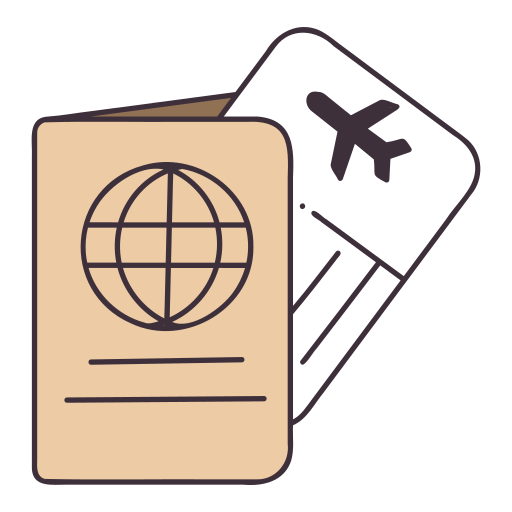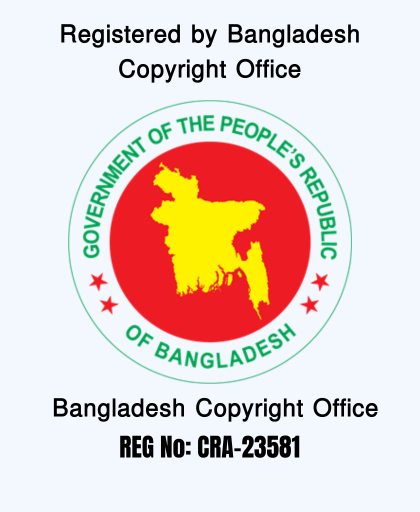Your Trusted Advisors in Business Success.
"JK Associates"is top-ranked Corporate Consultancy and Law firm in Bangladesh with the international presence provides specialized services in Intellectual Property Rights, Corporate Affairs, Foreign Trade and Investment, Taxation, and Litigation.
450+
Global Clients
10+
Specialists
7+
Year of experience
Business Setup Packages
STARTUP BASIC

*EMI Facilities
- Business Consultation
- Document Preparation
- Limited Company Registration (10 Lac Authorized Capital)
- Company TIN Registration
- Trade License (Up to 2 Lac Paid up)
- Bank Account Opening Assistance
- Company Stamp
*Terms & condition apply
Get QuotationSTARTUP EXCLUSIVE

*EMI Facilities
- Business Consultation
- Document Preparation
- Limited Company Registration (50 Lac Authorized Capital)
- Company TIN Registration
- Trade License (Up to 10 Lac Paid up)
- Bank Account Opening Assistance
- Company Stamp
- BIN Registration
- Trademark First Application
- Copyright Registration
- One Consultation with certified TAX Expert
*Terms & condition apply
Get QuotationSTARTUP PREMIUM

*EMI Facilities
- Business Consultation
- Document Preparation
- Limited Company Registration (1 core Authorized Capital)
- Company TIN Registration
- Trade License (Up to 10 Lac Paid up)
- Bank Account Opening Assistance
- Company Stamp
- BIN Registration
- Trademark First Application
- Copyright Registration
- One Consultation with certified TAX Expert
- Domain & Hosting (1 year)
- Company Website
- Android Apps
- Company Logo
- Social Media Setup (Digital Marketing)
*Terms & condition apply
Get QuotationSTARTUP BASIC

*USA
- Business Consultation
- Document Preparation
- Limited Company Registration (10 Lac Authorized Capital)
- Company TIN Registration
- Trade License (Up to 2 Lac Paid up)
- Bank Account Opening Assistance
- Company Stamp
*Terms & condition apply
Get QuotationSTARTUP EXCLUSIVE

*USA
- Business Consultation
- Document Preparation
- Limited Company Registration (50 Lac Authorized Capital)
- Company TIN Registration
- Trade License (Up to 10 Lac Paid up)
- Bank Account Opening Assistance
- Company Stamp
- BIN Registration
- Trademark First Application
- Copyright Registration
- One Consultation with certified TAX Expert
*Terms & condition apply
Get QuotationSTARTUP PREMIUM

*USA
- Business Consultation
- Document Preparation
- Limited Company Registration (1 core Authorized Capital)
- Company TIN Registration
- Trade License (Up to 10 Lac Paid up)
- Bank Account Opening Assistance
- Company Stamp
- BIN Registration
- Trademark First Application
- Copyright Registration
- One Consultation with certified TAX Expert
- Domain & Hosting (1 year)
- Company Website
- Android Apps
- Company Logo
- Social Media Setup (Digital Marketing)
*Terms & condition apply
Get QuotationSTARTUP BASIC

*UK
- Business Consultation
- Document Preparation
- Limited Company Registration (10 Lac Authorized Capital)
- Company TIN Registration
- Trade License (Up to 2 Lac Paid up)
- Bank Account Opening Assistance
- Company Stamp
*Terms & condition apply
Get QuotationSTARTUP EXCLUSIVE

*UK
- Business Consultation
- Document Preparation
- Limited Company Registration (50 Lac Authorized Capital)
- Company TIN Registration
- Trade License (Up to 10 Lac Paid up)
- Bank Account Opening Assistance
- Company Stamp
- BIN Registration
- Trademark First Application
- Copyright Registration
- One Consultation with certified TAX Expert
*Terms & condition apply
Get QuotationSTARTUP PREMIUM

*UK
- Business Consultation
- Document Preparation
- Limited Company Registration (1 core Authorized Capital)
- Company TIN Registration
- Trade License (Up to 10 Lac Paid up)
- Bank Account Opening Assistance
- Company Stamp
- BIN Registration
- Trademark First Application
- Copyright Registration
- One Consultation with certified TAX Expert
- Domain & Hosting (1 year)
- Company Website
- Android Apps
- Company Logo
- Social Media Setup (Digital Marketing)
*Terms & condition apply
Get QuotationSTARTUP BASIC

*DUBAI
- Business Consultation
- Document Preparation
- Limited Company Registration (10 Lac Authorized Capital)
- Company TIN Registration
- Trade License (Up to 2 Lac Paid up)
- Bank Account Opening Assistance
- Company Stamp
*Terms & condition apply
Get QuotationSTARTUP EXCLUSIVE

*DUBAI
- Business Consultation
- Document Preparation
- Limited Company Registration (50 Lac Authorized Capital)
- Company TIN Registration
- Trade License (Up to 10 Lac Paid up)
- Bank Account Opening Assistance
- Company Stamp
- BIN Registration
- Trademark First Application
- Copyright Registration
- One Consultation with certified TAX Expert
*Terms & condition apply
Get QuotationSTARTUP PREMIUM

*DUBAI
- Business Consultation
- Document Preparation
- Limited Company Registration (1 core Authorized Capital)
- Company TIN Registration
- Trade License (Up to 10 Lac Paid up)
- Bank Account Opening Assistance
- Company Stamp
- BIN Registration
- Trademark First Application
- Copyright Registration
- One Consultation with certified TAX Expert
- Domain & Hosting (1 year)
- Company Website
- Android Apps
- Company Logo
- Social Media Setup (Digital Marketing)
*Terms & condition apply
Get QuotationSTARTUP BASIC

*SINGAPORE
- Business Consultation
- Document Preparation
- Limited Company Registration (10 Lac Authorized Capital)
- Company TIN Registration
- Trade License (Up to 2 Lac Paid up)
- Bank Account Opening Assistance
- Company Stamp
*Terms & condition apply
Get QuotationSTARTUP EXCLUSIVE

*SINGAPORE
- Business Consultation
- Document Preparation
- Limited Company Registration (50 Lac Authorized Capital)
- Company TIN Registration
- Trade License (Up to 10 Lac Paid up)
- Bank Account Opening Assistance
- Company Stamp
- BIN Registration
- Trademark First Application
- Copyright Registration
- One Consultation with certified TAX Expert
*Terms & condition apply
Get QuotationSTARTUP PREMIUM

*SINGAPORE
- Business Consultation
- Document Preparation
- Limited Company Registration (1 core Authorized Capital)
- Company TIN Registration
- Trade License (Up to 10 Lac Paid up)
- Bank Account Opening Assistance
- Company Stamp
- BIN Registration
- Trademark First Application
- Copyright Registration
- One Consultation with certified TAX Expert
- Domain & Hosting (1 year)
- Company Website
- Android Apps
- Company Logo
- Social Media Setup (Digital Marketing)
*Terms & condition apply
Get QuotationVAT Calculator
Where Global Entrepreneurs Thrive
We make launching your Bangladesh business easy, fast, and effective

How to open Company in Bangladesh
Step-1
Proposed Name Search & Application
Request free company name search. We can check the eligibility of the name, and make suggestions if necessary.
Step-2
Prepare Company Details
- Approval proposed company name.
- To draft the memorandum of association (MoA) and articles of association (AoA).
- RJSC Register or login and online fillup in the company names and director/shareholder(s) details.
- Fill in the company address with share capital, other details (if any).
- If, the foreign equity company in Bangladesh. Open a bank account for the proposed company and transfer equity capital or transfer inward remittance from abroad and request for encasement certificate for foreign equity company registration to the bank.
Step-3
Payment for your company
- Register or login into the RJSC portal for check and final submission.
- Before the final submission, attach the zip file and encasement certificate for foreign company registration.
- To generate submission ID and acknowledgement slip.
- To communicate with concerned authority.
Step-4
Send the company kit to your address
- You will receive soft copies of necessary documents including: Certificate of Incorporation, Memorandum and Articles of Association, Form XII.
- You can bring the documents in the company kit to open a corporate bank account or we can help you with our long experience of Banking support service.
- Before the bank account opening you required the company tax certificate, trade license and rental deed, company seal stamp and board resolution on the official pad. Then your new company in a jurisdiction is ready to do business.
Frequently Asked Questions
Trademark Registration Process. Step 1: Searching for Trademark Registration . Step2: Power of Power of Attorney Step 3: Filling an Application for Trademark Registration, Next Up to Final Registration.









